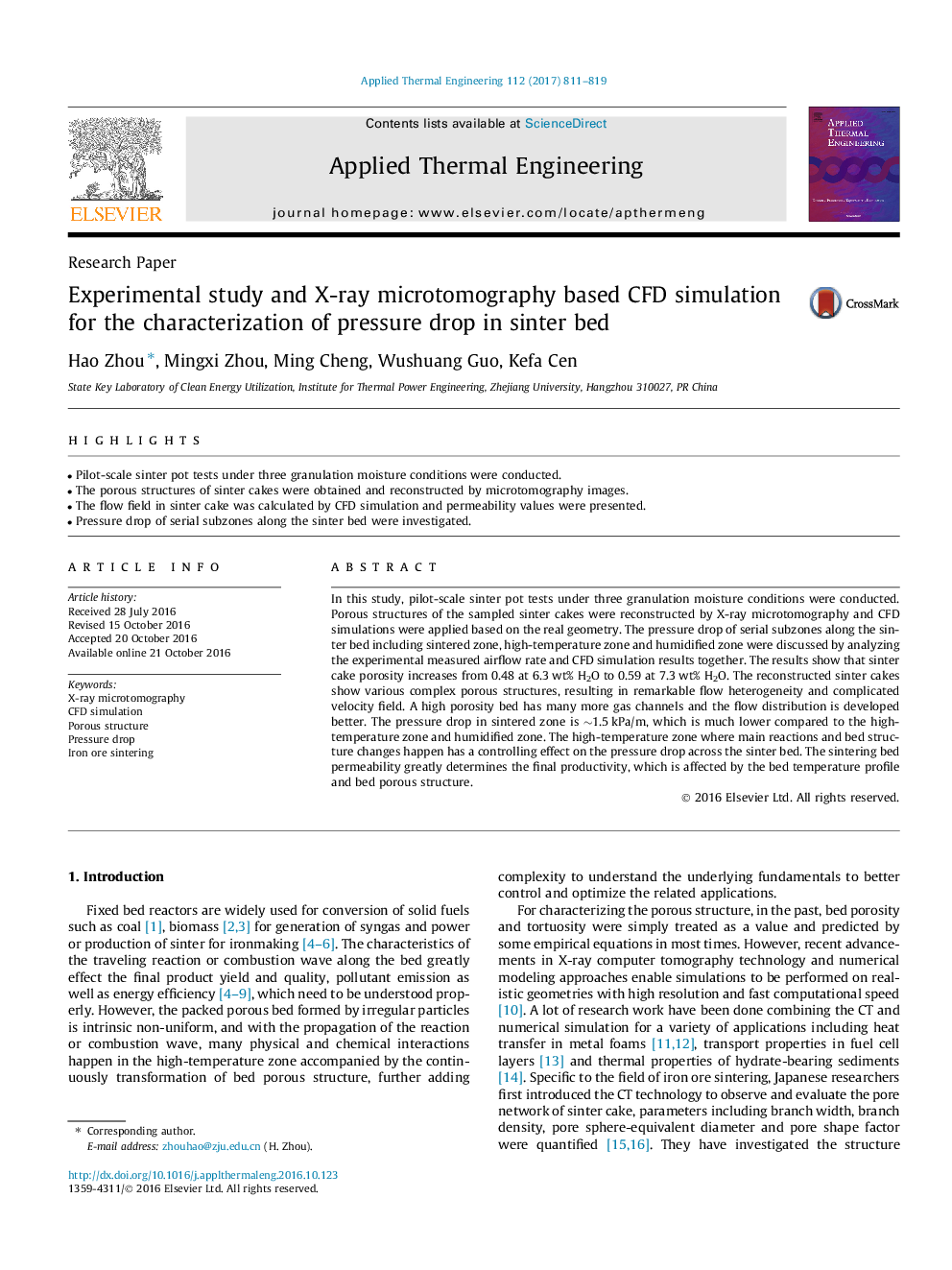| Article ID | Journal | Published Year | Pages | File Type |
|---|---|---|---|---|
| 4991753 | Applied Thermal Engineering | 2017 | 9 Pages |
Abstract
In this study, pilot-scale sinter pot tests under three granulation moisture conditions were conducted. Porous structures of the sampled sinter cakes were reconstructed by X-ray microtomography and CFD simulations were applied based on the real geometry. The pressure drop of serial subzones along the sinter bed including sintered zone, high-temperature zone and humidified zone were discussed by analyzing the experimental measured airflow rate and CFD simulation results together. The results show that sinter cake porosity increases from 0.48 at 6.3Â wt% H2O to 0.59 at 7.3Â wt% H2O. The reconstructed sinter cakes show various complex porous structures, resulting in remarkable flow heterogeneity and complicated velocity field. A high porosity bed has many more gas channels and the flow distribution is developed better. The pressure drop in sintered zone is â¼1.5Â kPa/m, which is much lower compared to the high-temperature zone and humidified zone. The high-temperature zone where main reactions and bed structure changes happen has a controlling effect on the pressure drop across the sinter bed. The sintering bed permeability greatly determines the final productivity, which is affected by the bed temperature profile and bed porous structure.
Related Topics
Physical Sciences and Engineering
Chemical Engineering
Fluid Flow and Transfer Processes
Authors
Hao Zhou, Mingxi Zhou, Ming Cheng, Wushuang Guo, Kefa Cen,
